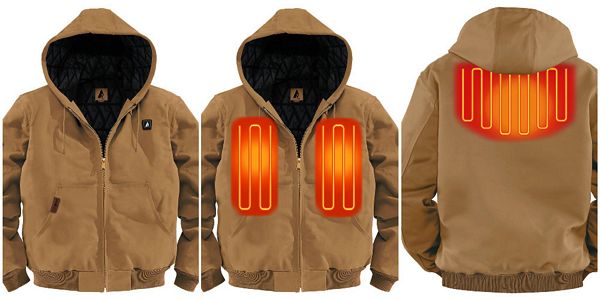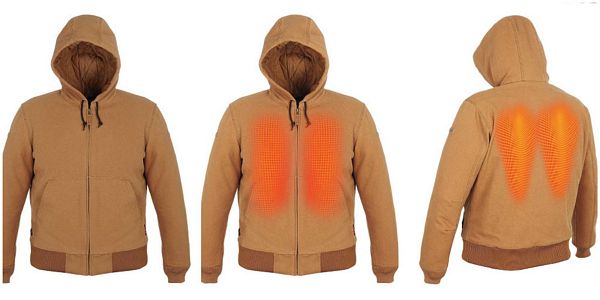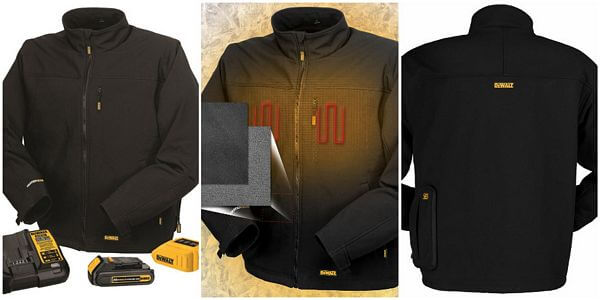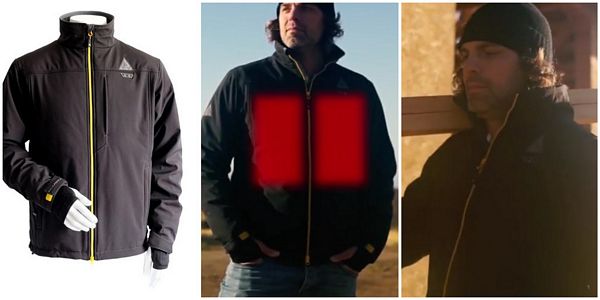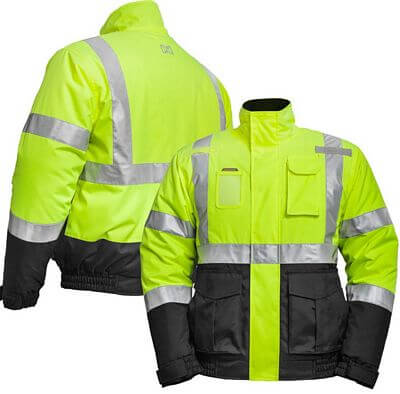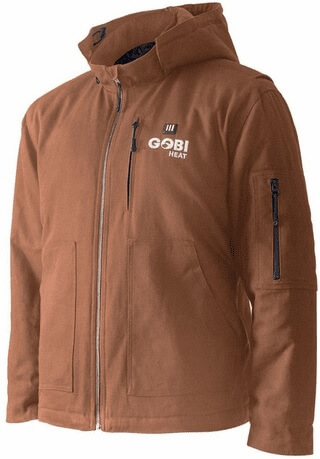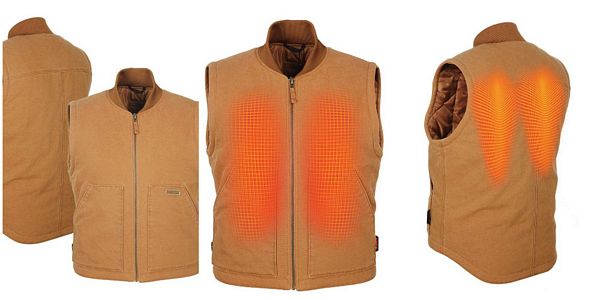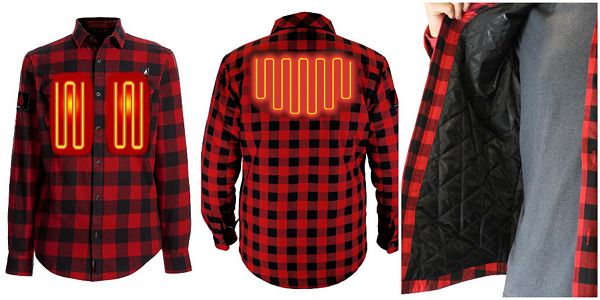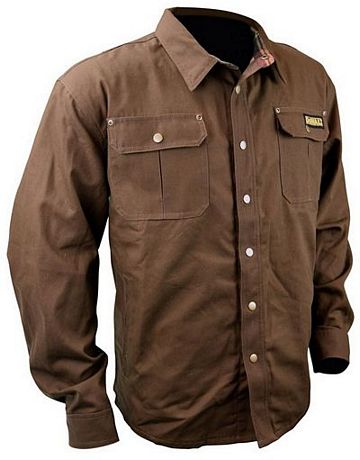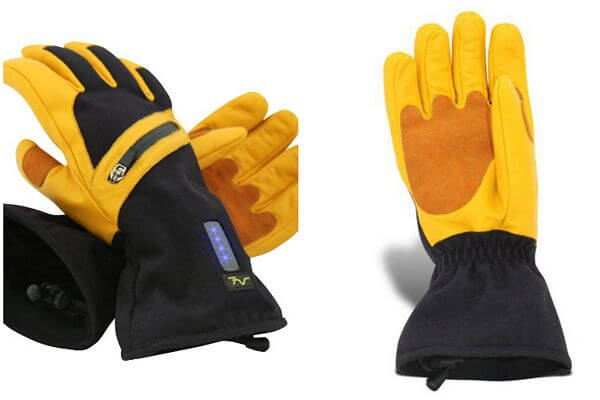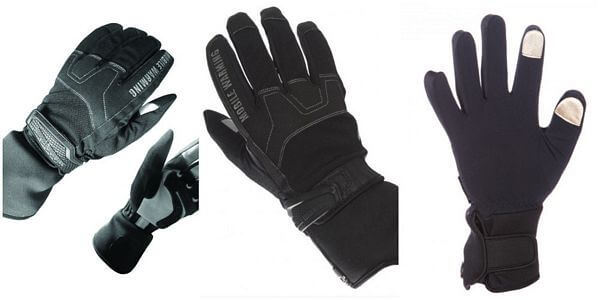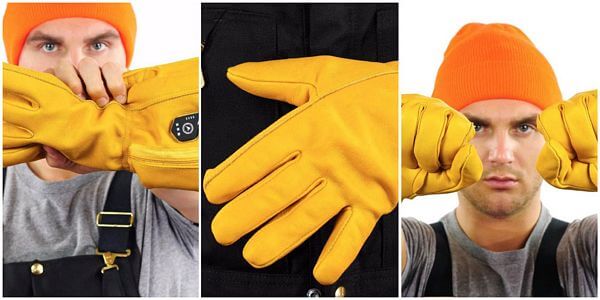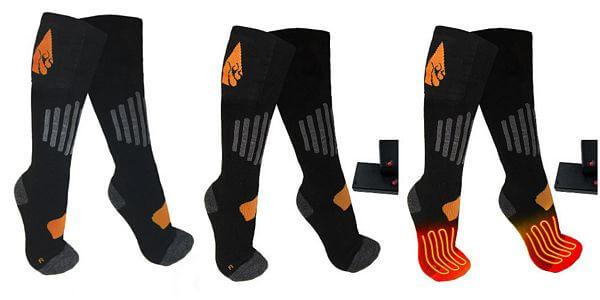There is no better way to stay warm while working outside in cold fall/winter days than using heated work clothing.
This heated workwear – jacket, vest, shirt, gloves, socks – will provide the heat you absolutely need to get the job done.
You can buy the following electric, battery powered, work clothing here.
Best Heated Work Clothes
ActionHeat Cordless Heavy-Duty Heated Work Jacket
Mobile Warming 12V Men’s Foreman Heated Work Jacket
DeWalt 20V/12V MAX Soft Shell Heated Work Jacket
Ravean Rugged Heated Work Jacket
Mobile Warming Outdoor Worker Heated Jacket
This work jacket is oil, stain, water and wind resistant. It provides up to 10 hours of heat per charge.
Gobi Heat Grit 5 Zone Heated Workwear Jacket
It has 5 heating zones and battery runs up to 9 hours on a single charge. It’s made of ultra-rugged duck cotton exterior fabric.
Mobile Warming 12V Men’s Foremen Heated Work Vest
ActionHeat 5V Battery Heated Insulated Flannel Shirt
DeWalt Heavy Duty Shirt
Wind and water resistant outer shell is made of heavy duty duck fabric. Inner shell is made of warm flannel lining with smooth polyester lined sleeves. Up to 9 Hours of run time and 3 core heating zones. LED controller with 3 temperature settings. There are six outer and inner pockets.
Volt Resistance – Battery Heated Work Gloves
Mobile Warming Workman Heated Work Gloves Set
FNDN Full-Leather Heated 3.7V Work Gloves
ActionHeat AA Battery Heated Socks
Click Here to Buy These or Other Models of Heated Work Clothes!
See also this electric heated shirt.
Working in The Cold
Sure it’s uncomfortable, sometimes miserable working in the cold. But can it really be dangerous?
Absolutely!
Exposure to cold, not even extreme cold, can be very dangerous and even life-threatening, if not properly managed.
There are two conditions you need to watch out for: frostbite and hypothermia.
It’s important that you understand what each of these are, their signs and symptoms and what to do if you recognize one of these in yourself or others.
Frostbite occurs when skin and body tissue actually begin to freeze due to exposure to cold. The first sign of frostbite will be tingling, generally in the extremities, but it could be in any surface exposed to the cold.
Usually you’ll feel the tingling in your fingers, toes, ears cheeks or nose. This isn’t a pleasant little tingle. This is like pins and needles sticking you.
As frostbite progresses, effective skin can look pale or waxy and can become hard.
If you experience any of these symptoms or are working with anyone experiencing them, here’s what you should do.
Get out of the weather and into a warm, dry place. Remove any wet clothing.
If possible put the affected area in a warm water bath. The water should not be hot or running and don’t rub the area thinking you’ll stimulate blood flow. Rubbing can actually do damage.
The idea is to warm the tissue slowly. Once normal feeling has returned to the area, keep it warm and get medical attention to ensure that there’s no lasting damage.
Frostbite is no joke! If untreated you can lose tissue fingers, especially toes.
Unless the air temperature is below 32 degrees, you can’t get frostbite but you certainly are susceptible to the second condition I mentioned – hypothermia.
Rather than affecting an area of skin, like frostbite, hypothermia affects your core body temperature. Normal body temperature is 98.6 degrees Fahrenheit. Hypothermia occurs when your core body temperature falls to or below 95 degrees.
Hypothermia can occur from long exposure to cold, short exposure to extreme cold or immersion in cold water.
Warning signs are uncomfortable or uncontrollable shivering, bluish, cold skin, slurred speech, loss of coordination, exhaustion and irrational behavior. All caused by the cooling of the blood and organs, especially the brain.
If any of these symptoms are present, action needs to be taken immediately because the situation can get bad quickly and could even lead to death.
It’s best to get the person to a warm, dry place, but before you do, call 911.
Once inside, remove any wet clothing and wrap the person up in warm clothes or blankets. Don’t put the person or any part of them in water. That could actually make them colder.
Give them warm, sugary drinks and avoid caffeine drinks. Don’t rub them but try to get them to move their arms and legs to generate some internal heat. It’s important to keep them awake.
Remember, it doesn’t have to be extremely cold to suffer hypothermia. Anytime you’re working in water or gets soaked in cold weather, hypothermia is a very real and dangerous possibility.
I can’t stress this enough. Hypothermia can be deadly.
You’re probably thinking ‘hey I don’t work in the Arctic’.
Arctic temperatures aren’t necessary to put you in a world of hurt, especially if you get wet.
Remember that the first layer of clothes next to your skin should be a material that wicks moisture away from your body. Your outer layer should be wind and waterproof.
It’s very important to stay dry in the cold and to have extra socks or gloves to change into if you do get wet.
If your feet are soaked for hours at a time, not only will it make you uncomfortable and cold, but you could also get trench foot. Keep your feet warm and dry and you should be able to keep the rest of you warm.
We all have to work in the cold, so let’s do it smart and let’s do it safe. An the best way to do that is to get heated work clothing.

For over 12 years, I have been testing and reviewing heating technologies that overcome cold weather conditions. In recent years, I have specialized in the heated apparel. I’ve made it my mission to educate people about heated clothing.
